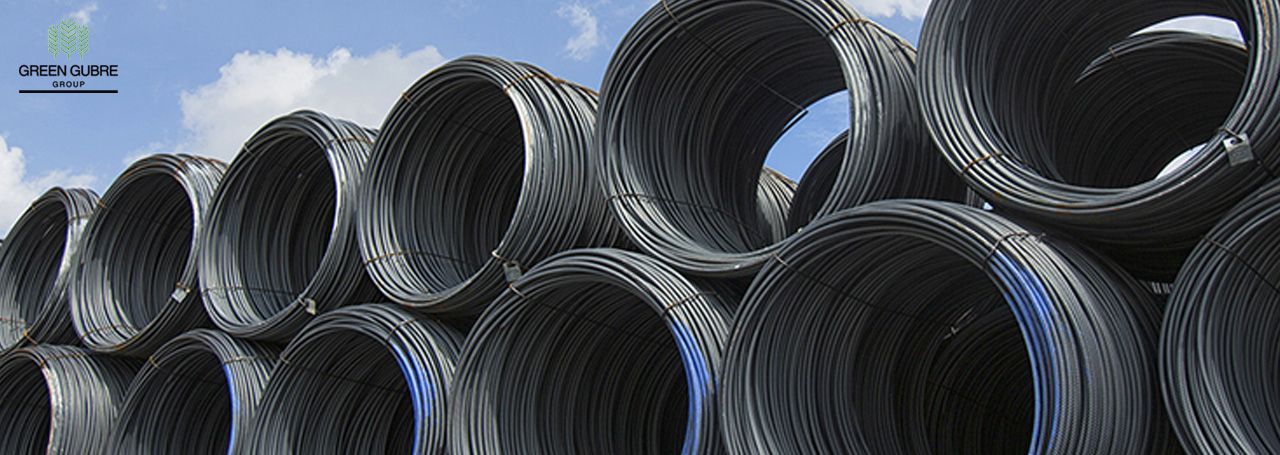Exploring the Versatility of Wire Rods in Industrial Applications
Exploring the Versatility of Wire Rods in Industrial Applications

Wire rods are a crucial intermediate steel product used in a wide range of industrial applications. Produced through hot rolling, wire rods are typically coiled and come in various diameters, ranging from 5.5 mm to 16 mm. Their versatility and ease of processing make them indispensable in the manufacturing of wires, cables, springs, fasteners, and a variety of other products used across industries such as construction, automotive, and electrical manufacturing. This blog delves into the benefits, applications, and significance of wire rods in the modern industrial landscape.
What Are
Wire Rods?
Wire rods are a type of hot-rolled steel product, primarily used as the raw material for wire drawing and other industrial processes. They are available in various grades and compositions, including carbon steel, stainless steel, and alloyed steel, depending on their intended application. Due to their ease of machinability and weldability, wire rods are widely used as the base material for numerous steel products, contributing significantly to the steel industry’s supply chain.
Types of
Wire Rods:
1. Carbon Steel Wire Rods:
Carbon steel wire rods are commonly used in the construction and automotive industries due to their strength and durability. These rods are used to manufacture wires, nails, screws, and fasteners.
2.
Alloy Steel
Wire Rods:
Alloyed with elements such as chromium, manganese, or vanadium, these wire rods offer enhanced mechanical properties, including increased corrosion resistance and strength. They are used in the production of tools, springs, and high-strength wires.
3.
Stainless Steel Wire Rods:
Stainless steel wire rods are highly resistant to corrosion and oxidation, making them suitable for use in harsh environments. They are used in applications such as medical devices, kitchenware, and marine equipment.
4. High-Carbon Wire Rods:
These wire rods are known for their hardness and are commonly used in the production of high-tensile-strength wires, such as those used in springs, cables, and tire reinforcements.
Key Benefits of
Wire Rods in Industrial Applications:
1. Versatility and Wide Range of Applications:
Wire rods serve as the foundational material for various products, from construction materials to fine wires used in electrical systems. Their versatility allows manufacturers to create products for industries as diverse as construction, automotive, electronics, and machinery.
2. Ease of Processing:
Wire rods are easy to process, making them ideal for manufacturing through wire drawing, cold forming, or hot forging. They can be machined, welded, and heat-treated to create specific products with desired mechanical properties.
3. Cost-Effective Manufacturing:
The use of wire rods in the production of industrial components is highly efficient and cost-effective. Manufacturers can mass-produce a variety of steel products from a single coil of wire rod, reducing waste and lowering production costs.
4. Customizable for Specific Applications:
Wire rods can be customized based on the specific needs of the application. Through alloying, heat treatment, and surface finishing, manufacturers can produce wire rods that meet the exact requirements for strength, flexibility, or corrosion resistance.
5. Sustainability and Recycling:
Steel wire rods are highly recyclable, making them an environmentally friendly material. The ability to recycle steel products from wire rods helps reduce the overall carbon footprint of manufacturing processes, contributing to more sustainable practices in industrial production.
Applications of
Wire Rods:
1. Wire Drawing and Cable Manufacturing:
One of the most common uses of wire rods is wire drawing, where the rods are drawn into finer gauges to produce wires used in electrical cables, telephone lines, and suspension bridges. Wire rods are an essential component in the production of high-quality electrical and communication cables.
2. Construction Materials:
In construction, wire rods are used to manufacture nails, screws, rivets, and other fasteners that are essential for building projects. Additionally, they are used in the production of wire mesh and fencing materials, offering strength and durability in construction applications.
3. Automotive Industry:
Wire rods play a key role in the automotive industry, where they are used to manufacture springs, fasteners, and components for tires. High-carbon wire rods are particularly valuable for producing high-strength wires that are used in suspension systems and other vehicle components.
4. Manufacturing of Springs and Fasteners:
Wire rods are widely used in the production of springs, screws, bolts, and nuts, all of which are critical components in various machinery, vehicles, and construction projects. The versatility of wire rods allows for the production of fasteners and springs with different tensile strengths and mechanical properties.
5. Welding Electrodes:
Wire rods are used in the production of welding electrodes, which are essential for joining metal components in various industries. The uniform composition and surface quality of wire rods ensure that the welding process is efficient and produces strong, durable joints.
Global Demand and Market Trends:
The global demand for wire rods is closely tied to the growth of industries such as construction, automotive manufacturing, and electrical infrastructure. As urbanization and industrialization accelerate, particularly in emerging markets, the need for high-quality wire rods is increasing. Additionally, with the rise of electric vehicles and renewable energy infrastructure, wire rods play a critical role in producing the components needed for these technologies.
Innovations in
Wire Rod Manufacturing:
Advancements in steel manufacturing technology have led to the production of higher-quality wire rods with improved mechanical properties. These innovations include the use of alloying elements to enhance strength and corrosion resistance, as well as improvements in rolling techniques that result in smoother surfaces and more consistent diameters. Such innovations enable wire rods to meet the stringent requirements of modern industrial applications.
Conclusion:
Wire rods are a foundational material in numerous industrial applications, from construction and automotive manufacturing to wire drawing and cable production. Their versatility, ease of processing, and cost-effectiveness make them indispensable in the production of essential components used in everyday life. As the demand for durable, high-performance materials grows, wire rods will continue to be a critical input in global industrial production.
Explore our range of high-quality wire rods designed for various applications on our dedicated product page.




